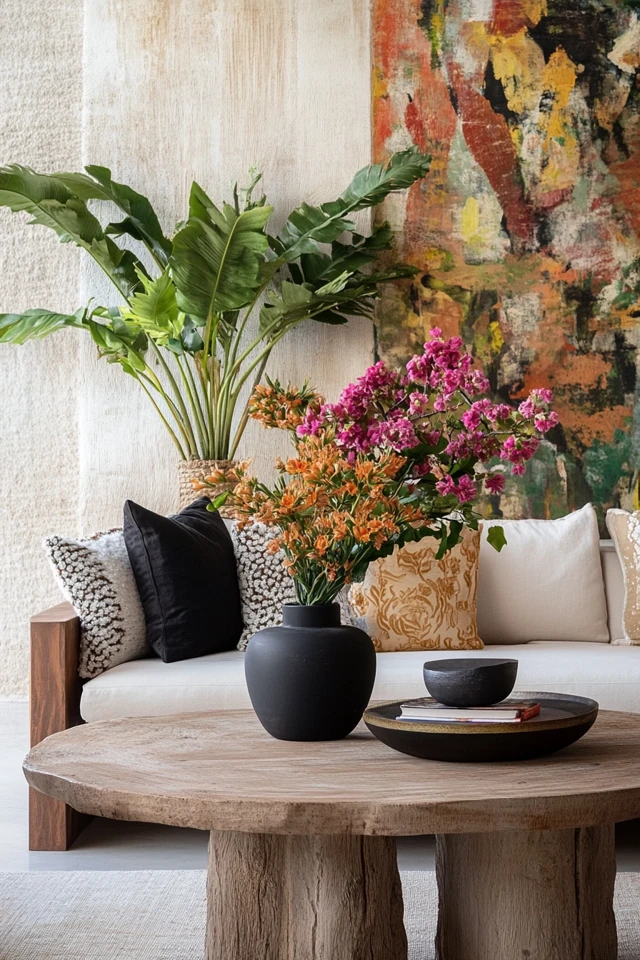There’s something undeniably calming about nature. The rustling of leaves, the scent of fresh flowers, and the texture of natural materials can soothe the soul and make us feel more grounded. Bringing natural elements into your home is one of the best ways to create a serene, refreshing, and stylish space. It’s about more than just plants—it’s a whole approach to design that focuses on warmth, texture, and connection to the natural world.
I fell in love with this concept while redecorating my dining room. Adding a live-edge wood table and a cluster of greenery instantly transformed the space into a relaxing haven. I even went a step further, incorporating natural textiles and stone elements. The effect was stunning—an earthy yet modern look that felt like a breath of fresh air.
In this guide, I’ll share creative ways to incorporate natural elements into your decor, bringing the outdoors in and creating a space that’s beautiful, balanced, and alive.
Why Incorporate Natural Elements?
Using natural elements in your decor helps create a warm, inviting atmosphere. These materials are timeless, versatile, and sustainable, making them a perfect choice for any design style. Plus, studies show that connecting with nature—even indoors—can reduce stress and improve well-being.
1. Add Greenery
Why It Works
Plants instantly bring life, color, and texture to a room while improving air quality.
How to Do It
- Use statement plants like fiddle-leaf figs, monsteras, or snake plants to anchor a space.
- Display smaller plants on shelves, tables, or windowsills.
- Create a hanging garden with macramé planters for a boho vibe.
Example:
A cluster of ferns, succulents, and a trailing pothos on an open shelf creates a lush, layered look.
2. Incorporate Natural Wood
Why It Works
Wood adds warmth and texture, creating a grounding and timeless aesthetic.
How to Do It
- Use furniture made of natural or reclaimed wood, like dining tables, headboards, or benches.
- Add wood accents, such as picture frames, trays, or shelves.
- Incorporate lighter wood tones for a Scandinavian feel or darker woods for a cozy, traditional vibe.
Styling Tip:
A live-edge coffee table paired with soft textiles creates a stunning contrast in a living room.
Picture Gallery
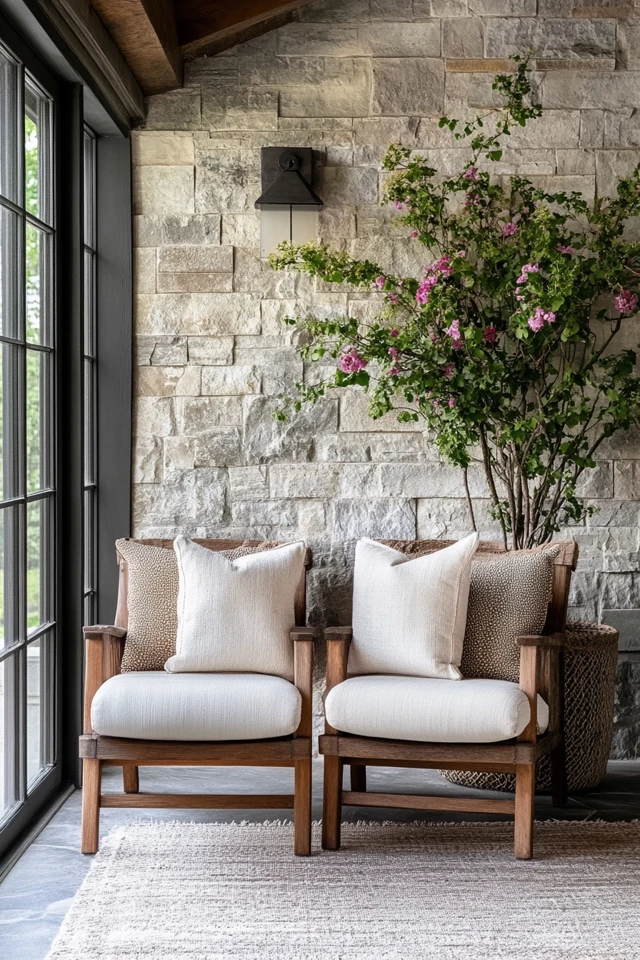

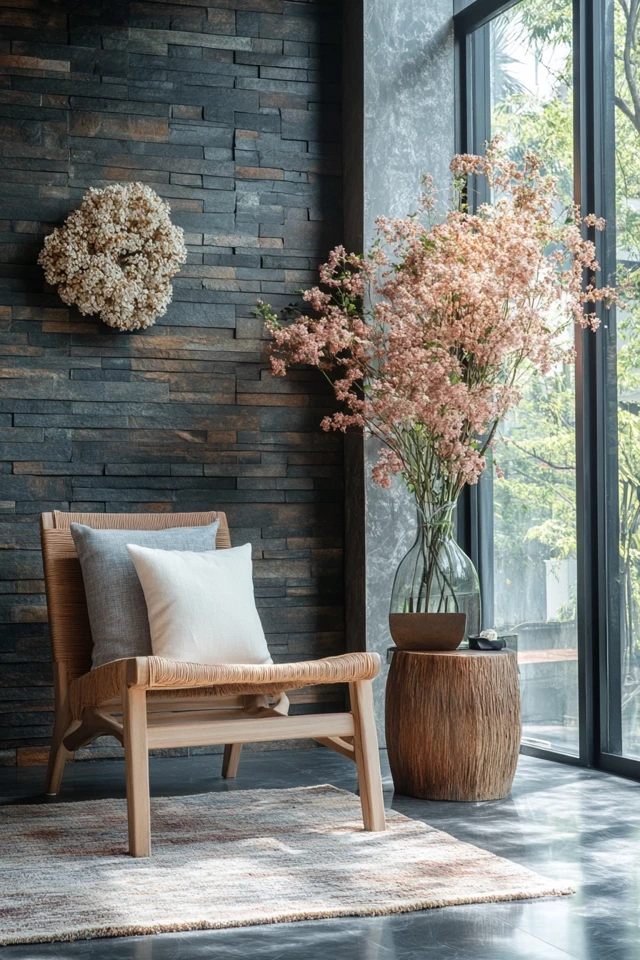
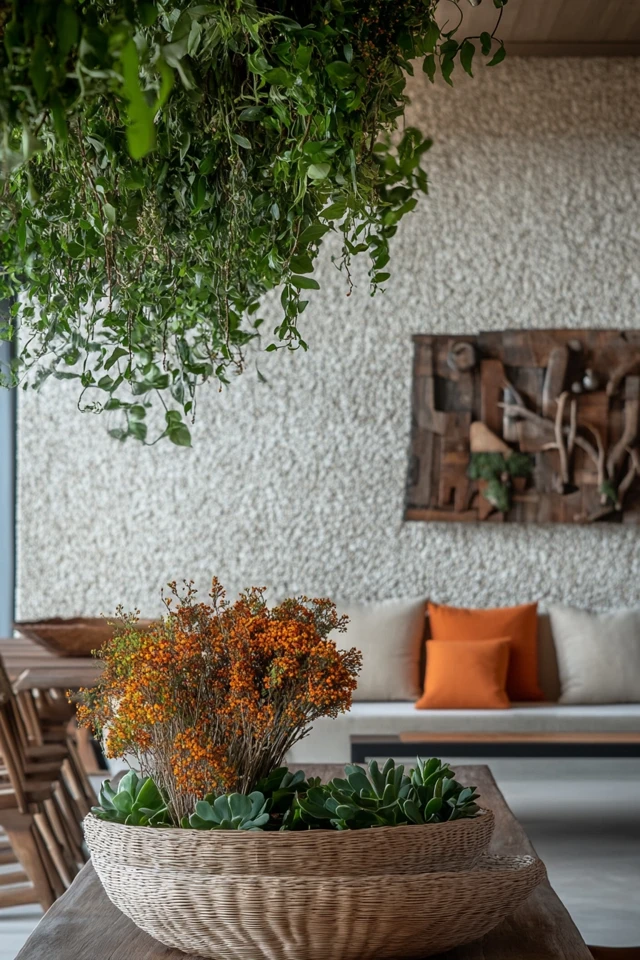
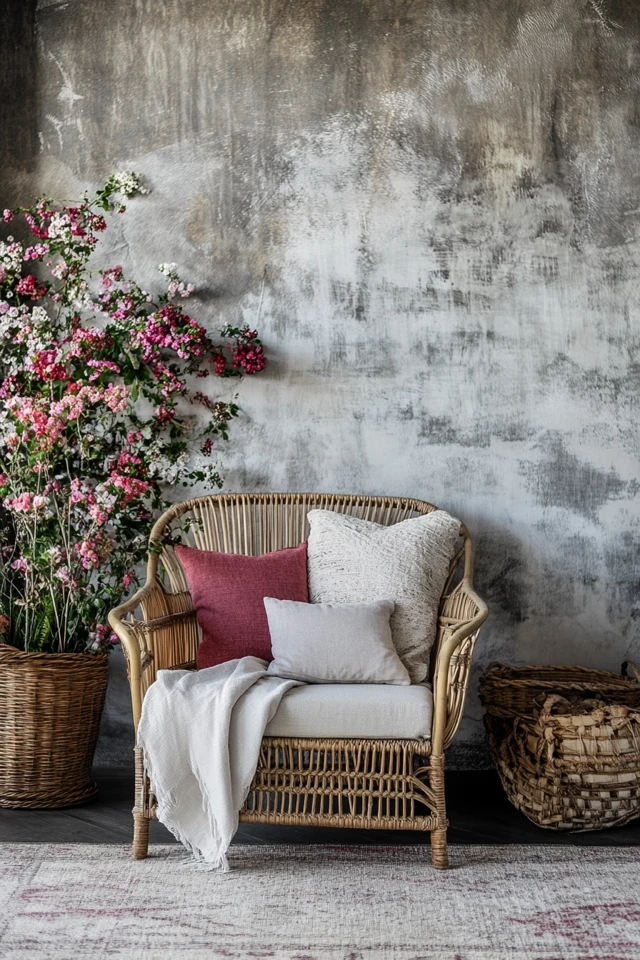
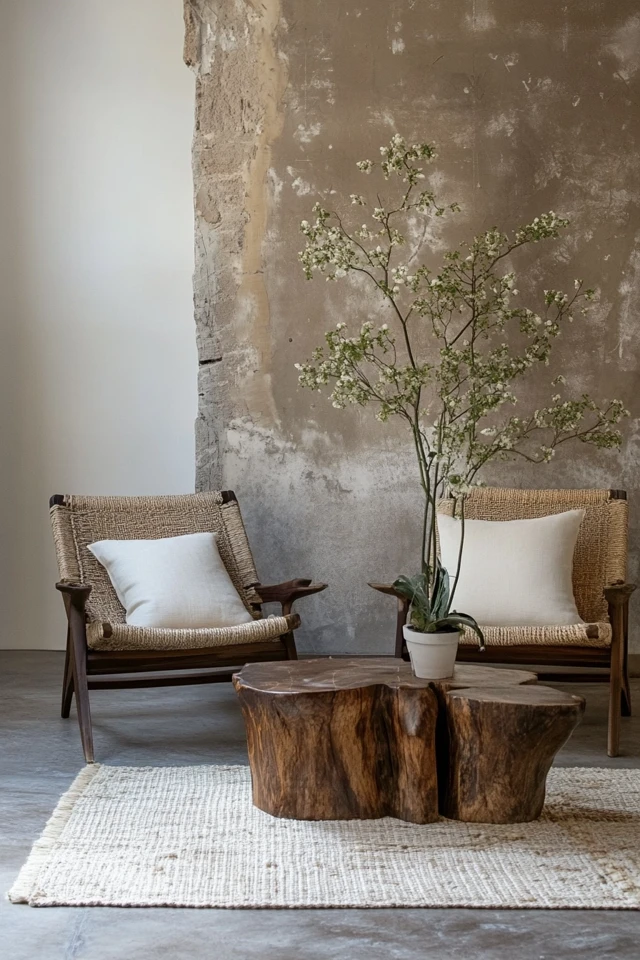
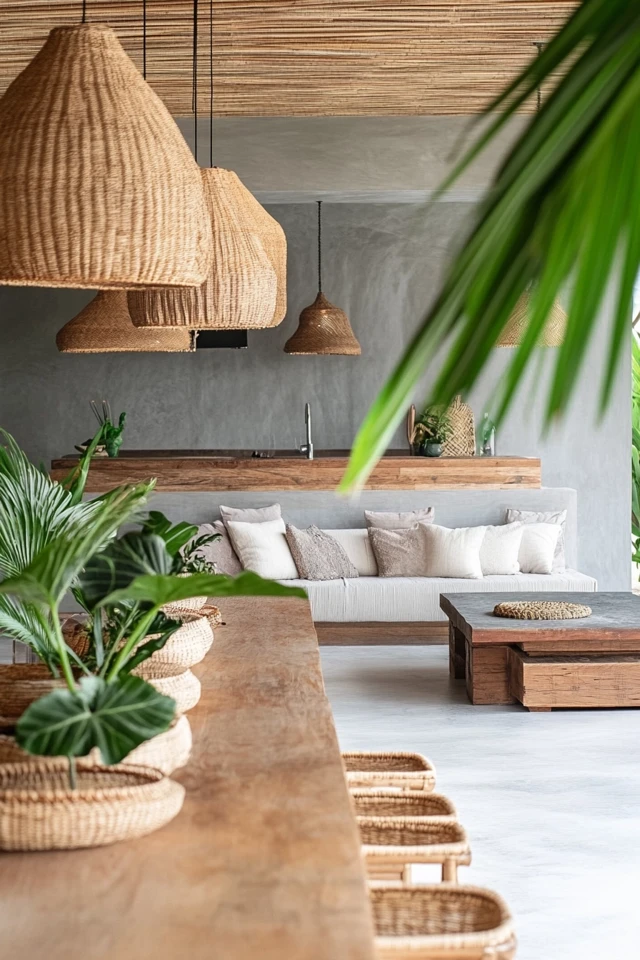
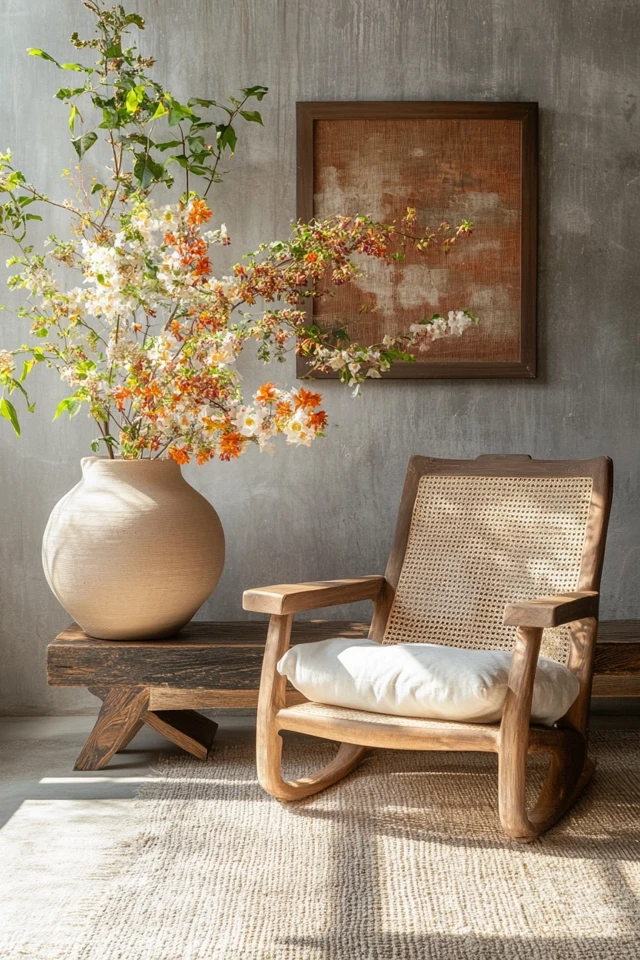
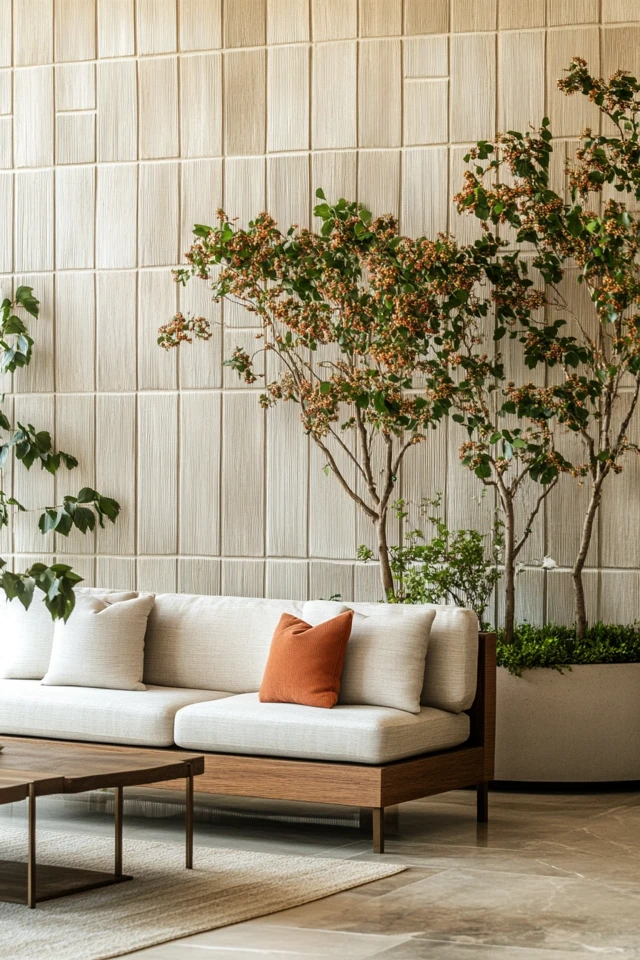
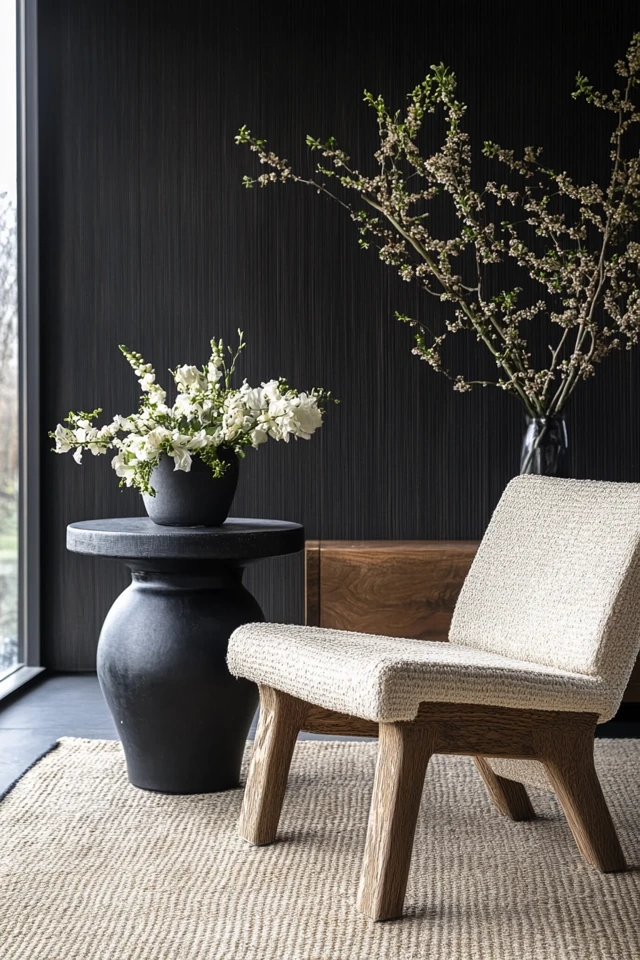
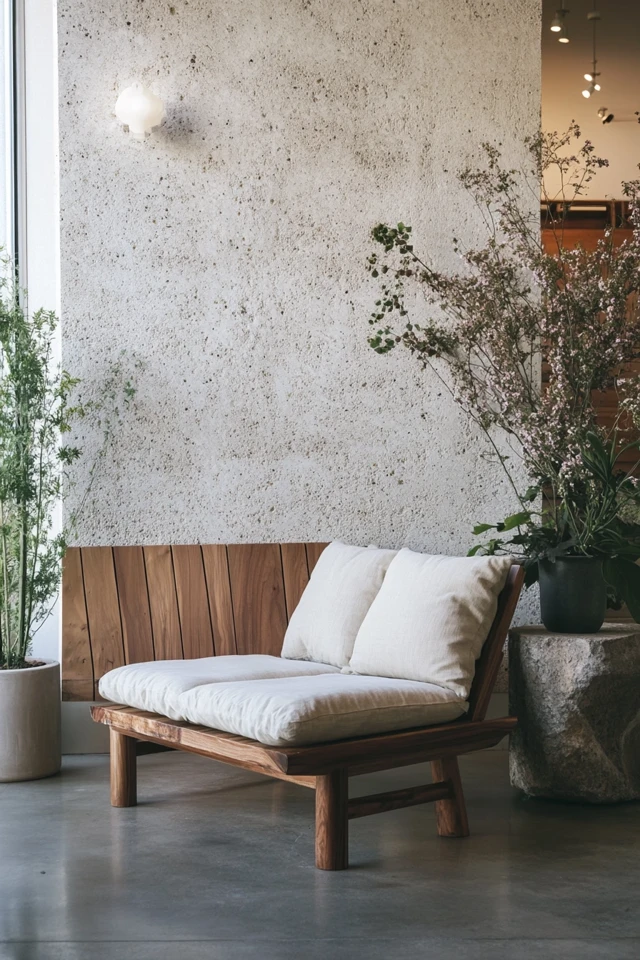
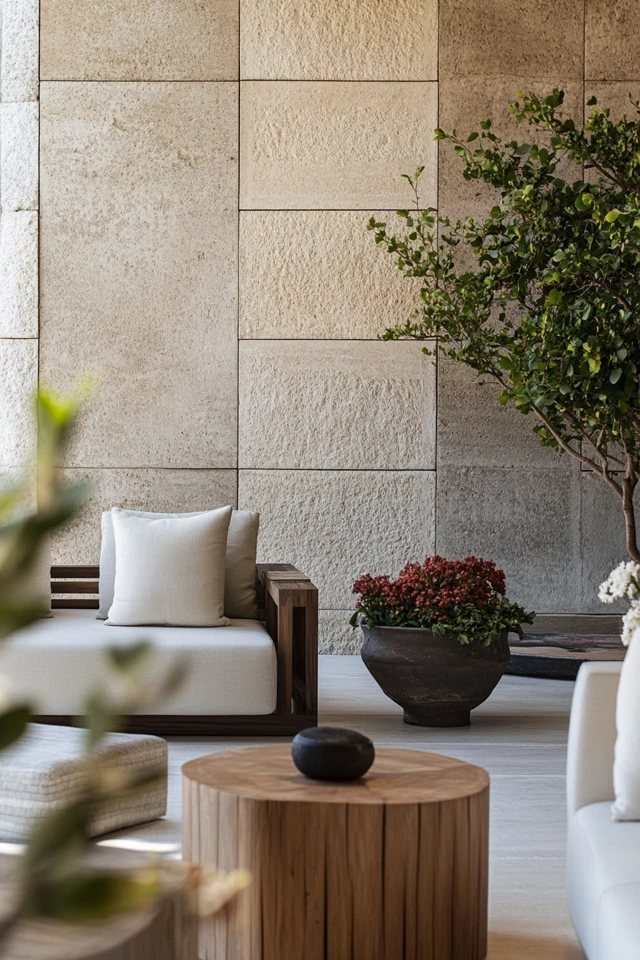
3. Introduce Stone Accents
Why It Works
Stone adds a raw, organic texture that feels earthy and sophisticated.
How to Do It
- Add a stone countertop or backsplash in the kitchen.
- Use decorative pieces like marble coasters, granite trays, or stone planters.
- Incorporate pebble mats or stone tiles in bathrooms for a spa-like feel.
Example:
A marble vase with fresh flowers on a wooden console creates a chic yet grounded vignette.
4. Use Natural Textiles
Why It Works
Fabrics like linen, cotton, and wool bring softness and comfort while connecting the room to nature.
How to Do It
- Choose linen curtains or bedding for an airy, relaxed look.
- Use jute or sisal rugs to add texture to your floors.
- Add wool throws or cushions for a cozy, tactile layer.
Styling Tip:
A jute rug paired with linen cushions in muted tones creates an understated, natural palette.
5. Incorporate Woven Materials
Why It Works
Woven pieces add texture and an artisanal touch that feels organic and timeless.
How to Do It
- Use rattan or wicker furniture, like chairs, side tables, or pendant lights.
- Add woven baskets for stylish storage solutions.
- Display woven wall hangings for added visual interest.
Example:
A wicker chair paired with a soft sheepskin throw makes for a cozy reading nook.
6. Highlight Natural Light
Why It Works
Maximizing natural light brightens your space and highlights its natural elements.
How to Do It
- Use sheer or light-colored curtains to let sunlight stream in.
- Place mirrors strategically to reflect light and make the space feel larger.
- Arrange furniture to make the most of your windows.
Example:
A dining area bathed in sunlight, with a wood table and plants, creates a warm, inviting atmosphere.
7. Decorate with Fresh Flowers
Why It Works
Fresh flowers bring color, fragrance, and a touch of elegance to your decor.
How to Do It
- Display a simple bouquet in a glass vase for a clean, classic look.
- Use dried flowers, like lavender or pampas grass, for long-lasting arrangements.
- Rotate seasonal blooms to keep your space fresh and vibrant.
Styling Tip:
A centerpiece of wildflowers on a dining table adds charm and a personal touch.
8. Incorporate Water Features
Why It Works
The sound and sight of water add a calming, Zen-like quality to your space.
How to Do It
- Use tabletop fountains to create a soothing ambiance.
- Incorporate aquariums or terrariums with water elements.
- Place a small bowl of water with floating candles or petals on a table.
Example:
A small stone fountain on a patio brings a tranquil, meditative vibe to your outdoor space.
9. Display Natural Art and Decor
Why It Works
Nature-inspired art and decor bring an organic touch without requiring maintenance.
How to Do It
- Hang botanical prints, landscape paintings, or pressed flowers in frames.
- Display driftwood, seashells, or rocks collected from nature as decor.
- Use sculptures or decor pieces made from natural materials like clay or cork.
Styling Tip:
A gallery wall of botanical prints in neutral frames creates a serene, curated feel in a bedroom.
10. Combine Natural and Modern Elements
Why It Works
Mixing natural elements with sleek modern pieces creates a balanced, contemporary look.
How to Do It
- Pair a glass coffee table with a jute rug for a mix of textures.
- Combine metal lighting fixtures with wood furniture for contrast.
- Use black or white accents to ground natural materials and create a modern edge.
Example:
A rattan pendant light above a white marble dining table combines rustic charm with modern sophistication.
How to Maintain Natural Elements in Your Home
- Care for Plants: Water and prune regularly, and choose low-maintenance options if you’re a beginner.
- Clean Textiles: Shake out or vacuum rugs, and wash linen and cotton fabrics as needed.
- Seal Wood and Stone: Use sealants to protect natural materials from wear and tear.
- Rotate Decor: Swap out fresh flowers and seasonal accents to keep your space feeling updated.
- Keep It Balanced: Avoid overcrowding—natural elements shine best when they have space to breathe.
Conclusion
Incorporating natural elements into your home is a powerful way to create a calming, inviting space that feels connected to the outdoors. Whether it’s through greenery, wood, stone, or textiles, these materials bring warmth, texture, and timeless beauty to any room.
When I started bringing natural elements into my home, I noticed an immediate shift in the atmosphere—it felt more grounded, serene, and truly reflective of my personality.
So, try adding a plant, a woven basket, or a stone vase to your space, and watch how these small touches transform your home into a sanctuary.
FAQ
What are the easiest natural elements to incorporate into my home?
Plants, woven baskets, and wooden furniture are all beginner-friendly options that are versatile and low-maintenance.
How can I incorporate natural elements on a budget?
Shop secondhand for wooden furniture, use thrifted baskets for storage, and propagate plants from friends or cuttings.
Can natural elements work in modern interiors?
Absolutely! Combining sleek modern pieces with organic textures creates a balanced and contemporary look.
What plants are best for low-light spaces?
Snake plants, pothos, and ZZ plants thrive in low-light environments and require minimal care.
How do I make my home feel cohesive with natural decor?
Stick to a consistent palette of earthy tones, and layer textures like wood, stone, and natural fabrics for a harmonious look.

